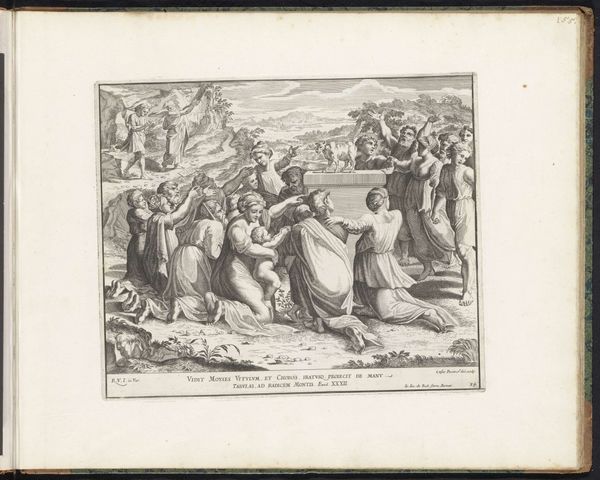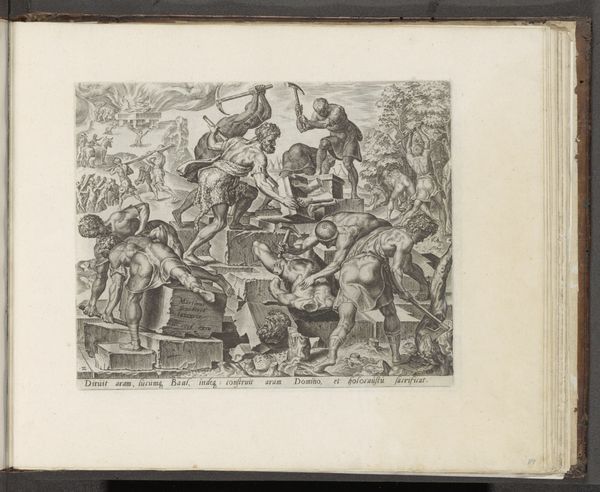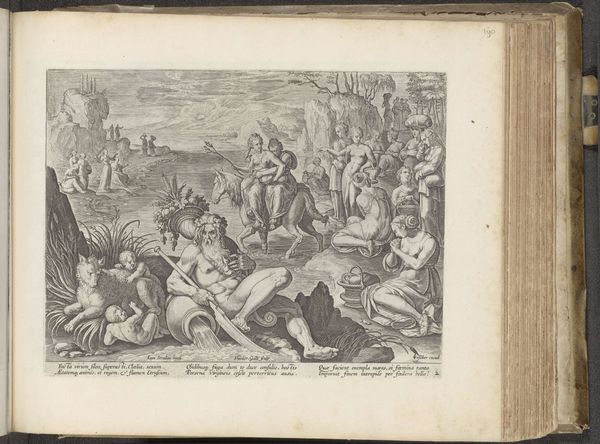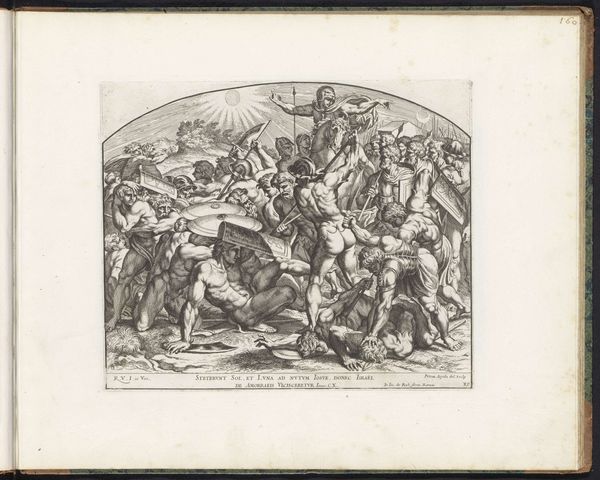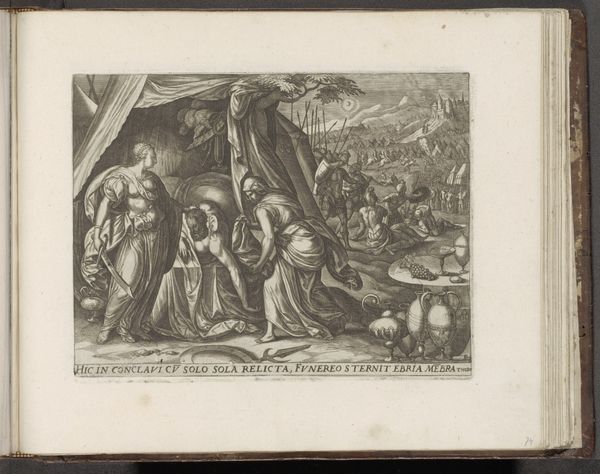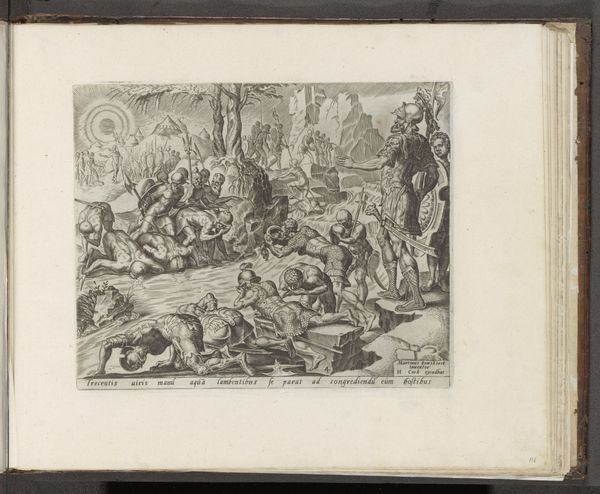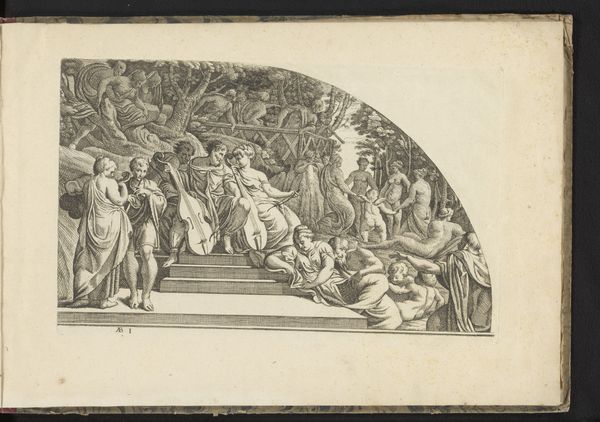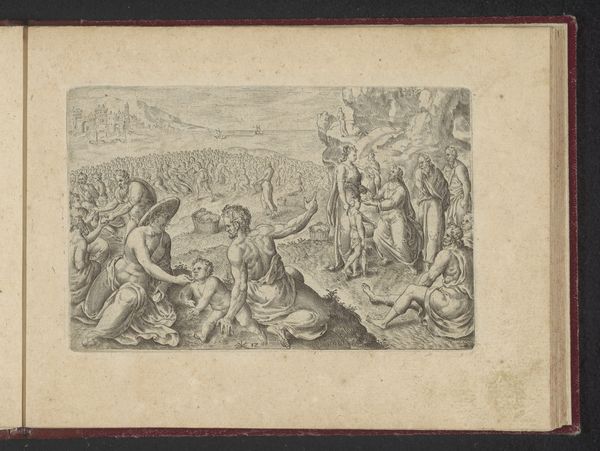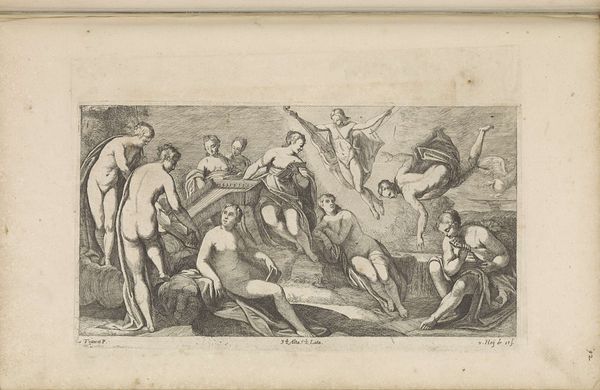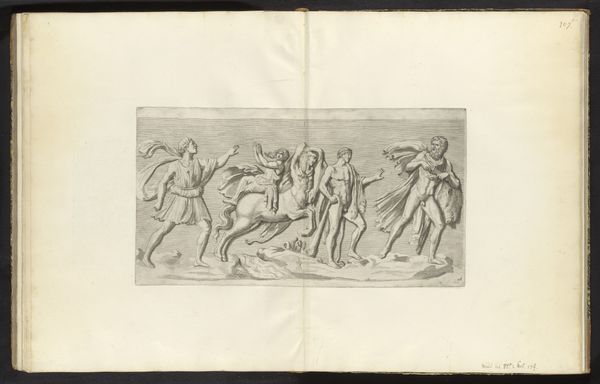
Dimensions: height 213 mm, width 265 mm
Copyright: Rijks Museum: Open Domain
Editor: We're looking at "Job met zweren bedekt" from 1585, an engraving by Jan (I) Snellinck. It's a complex composition, and honestly, my immediate feeling is one of suffering and injustice, judging from Job’s posture and those tormenting figures. What strikes you when you look at it? Curator: Indeed. Snellinck's work presents an opportunity to examine the intersections of religious narrative and social power. Notice how the composition reinforces existing hierarchies. Job, depicted as wretched and isolated, embodies suffering, while those around him, even the celestial figures, represent forms of judgment and control. Editor: So, the injustice feels baked into the way the image is structured. Curator: Precisely. Think about the period: 16th-century Europe. Religious narratives were frequently used to reinforce social norms and power structures. This image doesn’t simply depict a biblical story; it participates in a broader discourse about sin, punishment, and social order. The figures in the background riding horses seem to represent the community's judgement against Job. Editor: So, Job's suffering isn't just personal; it reflects anxieties about societal stability? Curator: Absolutely. Moreover, consider the act of visually representing Job’s affliction. Is it a form of empathetic witnessing or a spectacle that further dehumanizes him? Whose gaze does this image serve? Editor: That's a powerful question, whose gaze does it serve? It really does make you question the intent of the artist in depicting Job’s pain so vividly. Curator: Reflecting on this work reminds us that art is never neutral. It actively shapes how we perceive history, identity, and justice. Editor: I hadn’t thought about it that way, I thought it was only depicting a story from the bible. Thanks, it gives me a lot to consider.
Comments
No comments
Be the first to comment and join the conversation on the ultimate creative platform.
